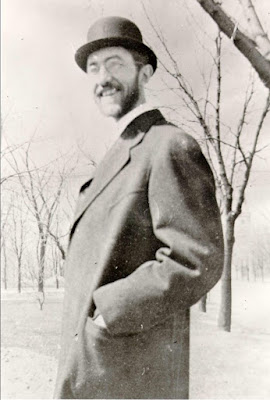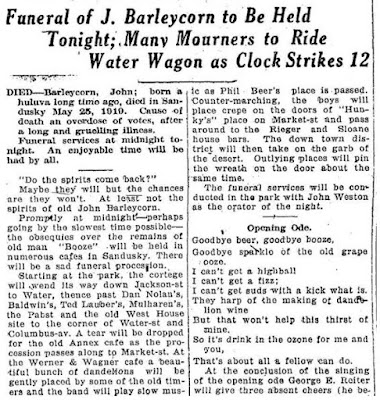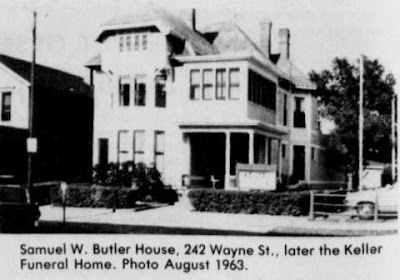The image above of Captain Ira Charles Krupp appears in the
Honor Roll of Ohio, 1917-1918, Erie County Edition. He served as a Captain in the Fourth Corps Artillery Park during World War I.
Ira C. Krupp was the son of funeral director Charles J. Krupp and the former Ida May Palmerton. At the turn of the twentieth century, the Krupp family resided at 404 Wayne Street, the former home of Oran Follett, which is now known as the Follett House Museum.
In 1901, Ira Krupp graduated from the Renouard training school for embalmers in New York City. By 1905, he was an assistant at the Krupp Mortuary Chapel. The Sandusky Star Journal of February 27, 1905 reported that he was seriously ill with blood poisoning that he had contracted through a small cut on his skin while embalming someone who had died from the same ailment. For a time, doctors thought they may have to amputate young Krupp’s arm. Fortunately, he recovered.
In 1906, he took a job as a sales representative with a large chemical manufacturing company, working in Boston, and traveling throughout New England. He married Emeline Moss in 1907; she was the daughter of Sandusky banker Charles H. Moss and the granddaughter of Judge William Griswold Lane.
The December 5, 1908 issue of the Sandusky Register featured an article that stated Mr. Krupp was now the proprietor of “Ye Oak Meadow” stock farm and dairy, on South Hayes Avenue. He had recently been at a large farm and dairy exhibit in Chicago, where he purchased a Guernsey bull, Messmate of Ingleside. He said about the animal, “It is one of the finest specimens I have ever seen in all of my experience and is bound to attract the attention of stockmen near and far.”
In 1917 and 1918, Ira C. Krupp achieved the rank of Captain with the Fourth Corps Artillery Park. While in military service in Germany during the war, Ira was the editor of the first American newspaper printed in Germany. The paper was called the “Fourth Corps Flare,” and was considered the official organ of the Fourth Corps Artillery Park. An article in the March 25, 1919 issue of the Sandusky Register featured an article about the publication.
After returning home from military service, Mr. and Mrs. Ira Krupp sold their land in Perkins Township, and moved to Black Hall, Connecticut, where they lived for several years. Ira Krupp died in 1935. His remains were returned to Sandusky. The final resting place of both Mrs. and Mrs. Ira Krupp is in the Lane family lot at Oakland Cemetery in Sandusky, Ohio.
Mrs. Ira Krupp, the former Emeline Moss, was once on the Board of Trustees of the Sandusky Library Association. Mrs. Krupp died in 1957 in Connecticut.
Though Ira and Emeline Krupp lived their final years in Connecticut, they had strong family ties to Sandusky and Erie County, Ohio. Visit the Sandusky Library Archives Research Center if you would like to research your own ancestors from Erie County, Ohio.

 this blog
this blog






















































